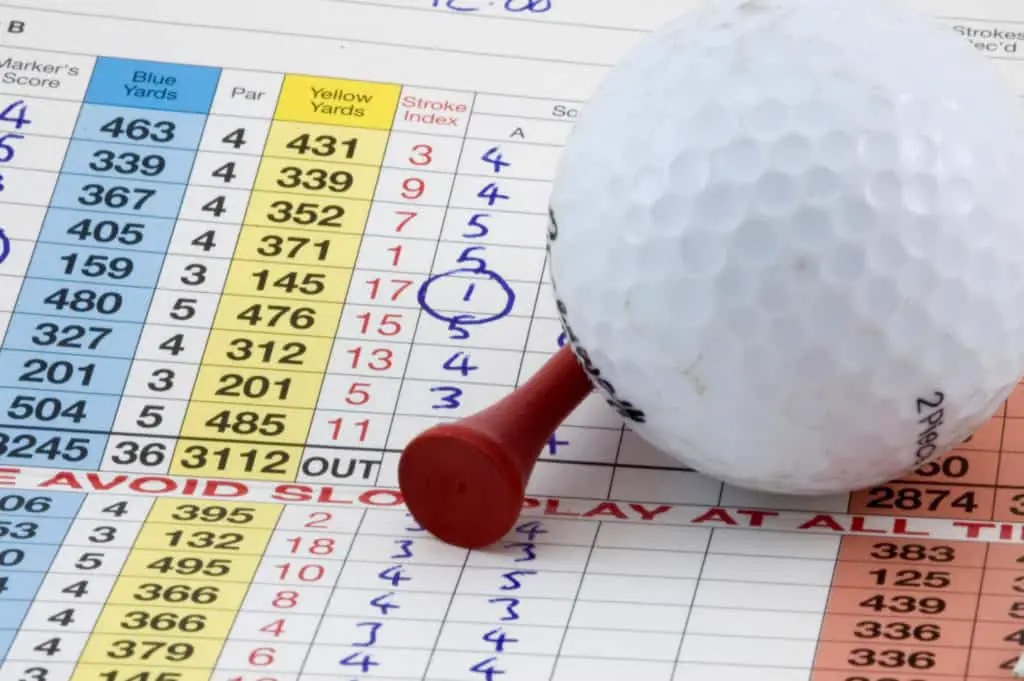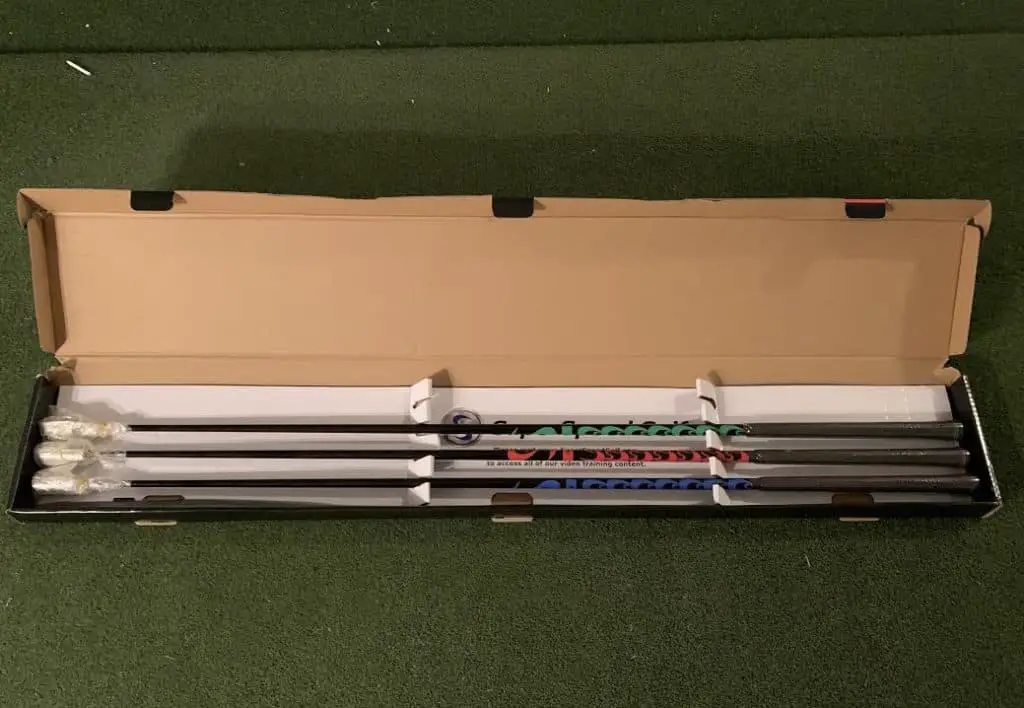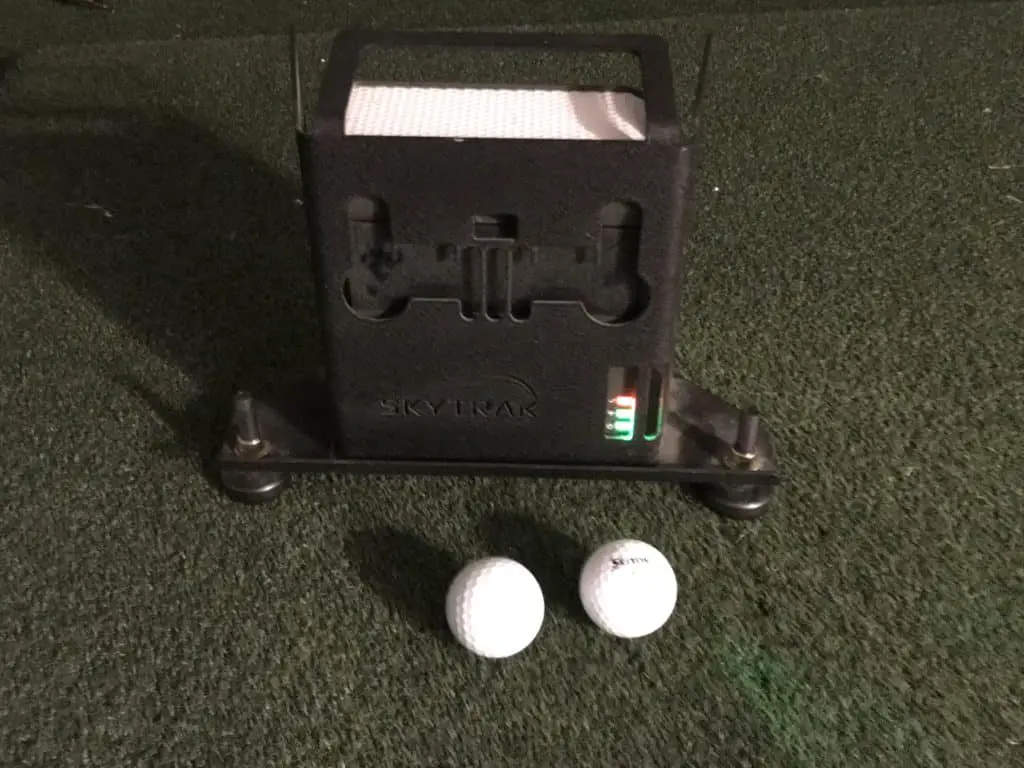When one considers that only 2% of golfers can even break 80 in golf, some might think that the scratch golfer is somewhat similar to a pro golfer.
Unfortunately, for the scratch golfer, there is still a major gap between his or her scores and that of a professional golfer.
A scratch golfer is any golfer that can play to the course rating on any and all courses that they encounter. This is more of an average over time on the best 50% of the rounds that the golfer plays.
For example, if the course rating is 72 and the golfer shoots scores of 72, 74, 70, 68, 76, 72, 74, and 70. They would be considered right around that scratch identification. Being a scratch golfer does not mean shooting part every time, but on average the golfer will be able to shoot right around par (sometimes lower, sometimes higher) on the majority of the rounds, regardless of the course.
But what is the difference between the two levels? Below I will take you through the stats and then give you the 5 major differences!

What is the difference between a scratch golfer and a pro?
The scratch golfer will mainly be around par or close to the course rating if it is slightly higher or lower than par. While the pro golfer will shoot between 4 to 6 shots better on average compared to a scratch golfer.
The pro golfer is that much better! So if you get close to scratch, there is still a way to go before heading out to quality for the PGA Tour or even the mini tours.
How To Best Define A Scratch Golfer: By the Numbers
What Does Scratch Golf Look Like – Stats Breakdown
| Greens in Regulation | 67% |
| Fairways Hit | 53% |
| Putts Per Hole | 1.67 |
| Scrambling | 54% |
| Sand Saves | 59% |
| Average Driving Distance | 251 |
Some Major Takeaways From The Table Above:
- 12 out of 18 greens in regulation seems doable on an average course. This is 2 out of every 3 holes.
- The 53% for fairways hit can always be a bit misleading. Are the other 47% of drives still in play and the only barrier is a bit of rough? Or is the ball now behind the tree. A stat I would like to see is if you have a clean, unobstructed shot to the green.
- The putts per hole seems seems reasonable.
- The scrambling stat is not surprising at all. I would have thought that one must be above 50% to become a scratch golfer. I have heard that PGA Tour players expect to chip a ball within a 3 foot circle – 7 out of 10 times. If a scratch golfer can do this 5 out of 10 times and then make one putt outside of 3 feet, they can easily average around 60% in scrambling.
- The sand saves is an impressive number as it is actually higher than the scrambling percentage. This shows that scratch golfers save par more from the sand then the rough.
- The average driving distance is actually lower than I would have anticipated. A 250 driving average only takes around a 103 mile per hour swing speed.
Excellent video on what a scratch golfer looks like:
How To Best Define A Pro Golfer: By the Numbers
I have heard many times that until you can shoot 4 to 6 under par on your home course on a regular basis, that you shouldn’t even consider turning pro or thinking you can make it out on even the minor league golf tours.
So I did a little comparison to the stats above and looked at the 25th rank player in each of the categories above where I gave percentages for the scratch golfer, so I can make a comparison and see where the true gap is.
Scratch Golfer vs Pro: Statistical Breakdown
| Category | Scratch Golfer | Top 25 PGA Tour |
| Greens in Regulation | 67% | 70.33% |
| Fairways Hit | 53% | 66.40% |
| Putts Per Hole | 1.67 | 1.57 |
| Scrambling | 54% | 63% |
| Sand Saves | 59% | 58.73% |
| Average Driving Distance | 251 | 305.7 |
Scratch Golfer vs Pro: 5 Major Differences
Difference #1 Scratch Golfer vs Pro: Greens in Regulation
The professional golfer ranked number 25 on tour hits 3% more greens in regulation when compared to the scratch golfer. When you consider the firmness of the greens and the difficulty in green complexes that are played on the tour, this number might be even larger if both the scratch golfer and the professional golfer played on the same course.
This is only ½ a hole more per round, but over the course of a 4 round tournament it would equal 2 total greens. So a minor difference, but over time this number will add up.
Difference #2 Scratch Golfer vs Pro: Fairways Hit
We see 53% vs 66% for the 25th ranked golfer in this category on the PGA Tour. This is 13% more fairways. Once again, this is significant if you compared the rough on tour to the average course in your area. This would equal around 2.3 more fairways per round for a total of close to 10 for a tournament. While there isn’t the same premium on hitting fairways, there is still something nice about hitting a ball out of the fairway vs the rough.
Difference #3 Scratch Golfer vs Pro: Putts Per Hour
This is a slight difference here, which can be misleading. What this number doesn’t take into consideration is how many greens in regulation are being hit by the golfers. For the golfer that saves par all day by getting up and down, this number can be thrown off.
Difference #4 Scratch Golfer vs Pro: Scrambling
The 25th ranked golfer in the scrambling category on the PGA Tour saves par 9% more frequently than your average scratch golfer. Assuming the golfer misses around 6 greens per 18 holes, this comes out to about .5 of a stroker per round. Not a major difference, but over the 4 rounds of a tournament, we are talking 2 total strokes.
Difference #5 Scratch Golfer vs Pro: Average Driving Distance
Here we see a major gap between the scratch golfer and the 25th ranked PGA Tour player in driving distance. 251 yards vs 305 yards ia a major difference. The scratch golfer is giving up 54 yards on the par 5s and par 4s. This is a major gap when you start talking proximity to the pin on the PGA Tour from certain differences.
These guys are good!
Being able hit the ball long is a game changer and one that area if you are seeking to get your game to the highest level, must train to get there. Enter SuperSpeed Golf!
The good news is that there are ways to improve your swing speed as we have learned from watching golfers in the past several years like Phil Mickelson, Bryson DeChambeau and others who have more quietly added distance. If you look in the bag of many of these professionals you will see the SuperSpeed Training Swing Sticks that are true game changers. I was able to gain 7-10 miles per hour and am striving to reach the 113 PGA Tour average on swing speed with the driver.

More Info on SuperSpeed Golf
I mentioned above that I was able to increase my swing speed by 7-10 miles per hour on average with through training with the SuperSpeed Golf System. This overspeed training protocol is based on the science surrounding overspeed training.
The concept is that you will swing and train with lighter clubs and one heavier club to train the body and mind to be able to swing faster. In order to swing faster, you have to train to swing faster.
This every other day program that only takes a 15 minute training session every other day can add to 5-8% in swing speed, which could mean 20-30 yards in total distance with your driver. Are you ready to commit to this routine every other day and take your swing speed to the next level? Check out the current pricing below at SuperSpeed Golf!
One more chart to show the difference in swing speed and distance:
| Senior | Average | Low Handicap | Tour Pro | |
| Driver Swing Speed | 91 and Below | 91-101 | 102-112 | 113-123 |
| Driver Distance | 210 and Below | 210-235 | 235-275 | 275-300 |
| 3 Wood Distance | 200 | 220 | 230 | 243 |
| Hybrid Distance | 190 | 205 | 215 | 225 |
| 4 iron Distance | 170 | 185 | 195 | 203 |
| 5 iron Distance | 160 | 175 | 185 | 194 |
| 6 iron Distance | 150 | 163 | 173 | 183 |
| 7 iron Distance | 140 | 153 | 163 | 172 |
| 8 iron Distance | 130 | 143 | 153 | 160 |
| 9 iron Distance | 120 | 131 | 141 | 148 |
| pw Distance | 110 | 121 | 131 | 136 |
| sw Distance | 90 | 100 | 110 | 120 |
| lw Distance | 70 | 80 | 90 | 105 |

Final Thoughts: Scratch Golfer vs Pro
Golf is a tough game and if you can break 80 you are in the top 2%, but to truly become one of the eltime you must be able to hit the ball long enough to over power courses or to be able to hang with the top players on the 7000 plus yards courses. This is where speed training is so important.
Also, a number that doesn’t show up in the stats is overall ball striking. If you go watch any PGA Tour event in person, the crispness of the ball strike is so impressive. To work on this I would recommend a portable launch monitor to give you instant feedback on your essential numbers on every ball strike.
Here are 5 Trackman Alternatives
